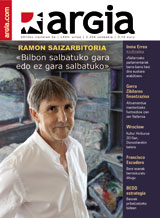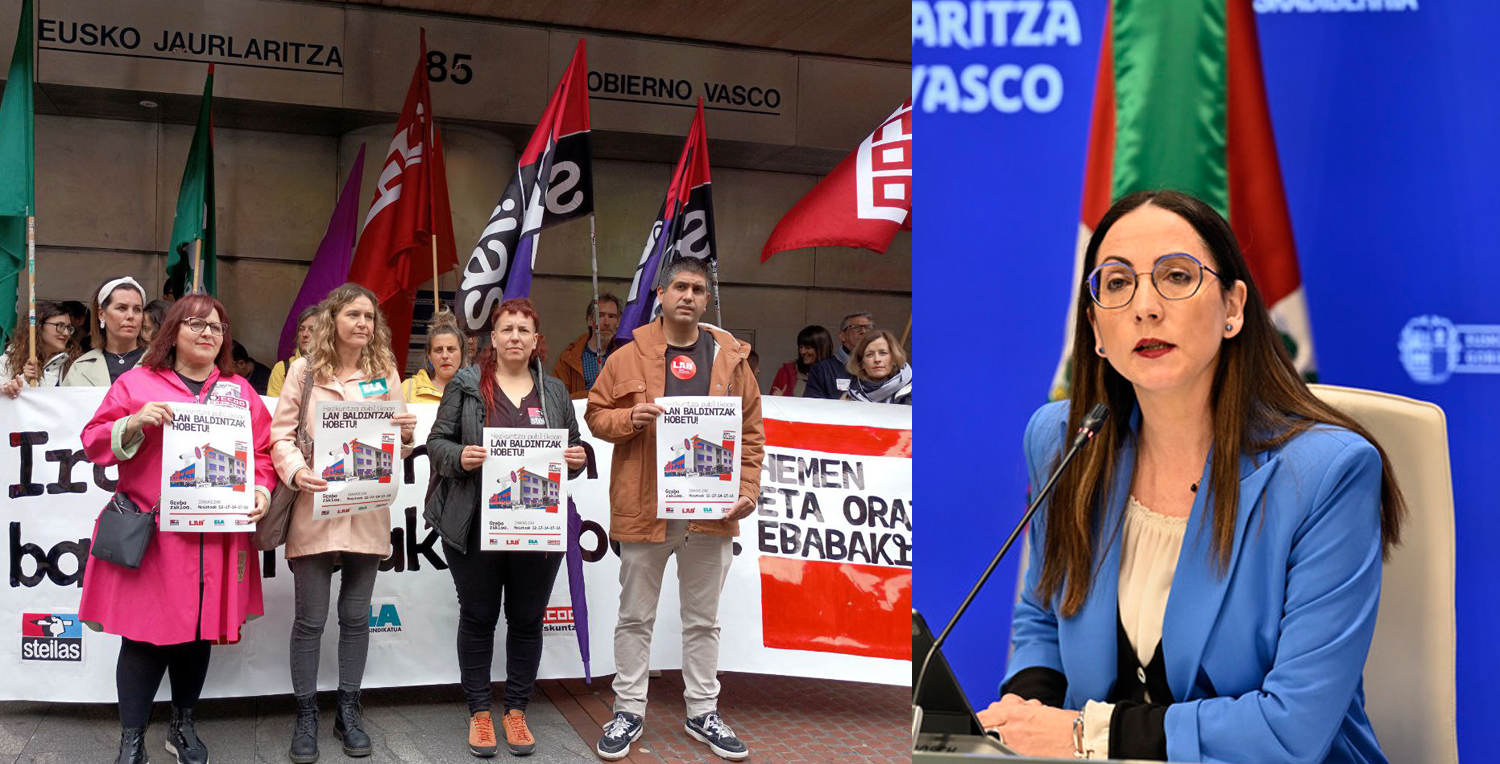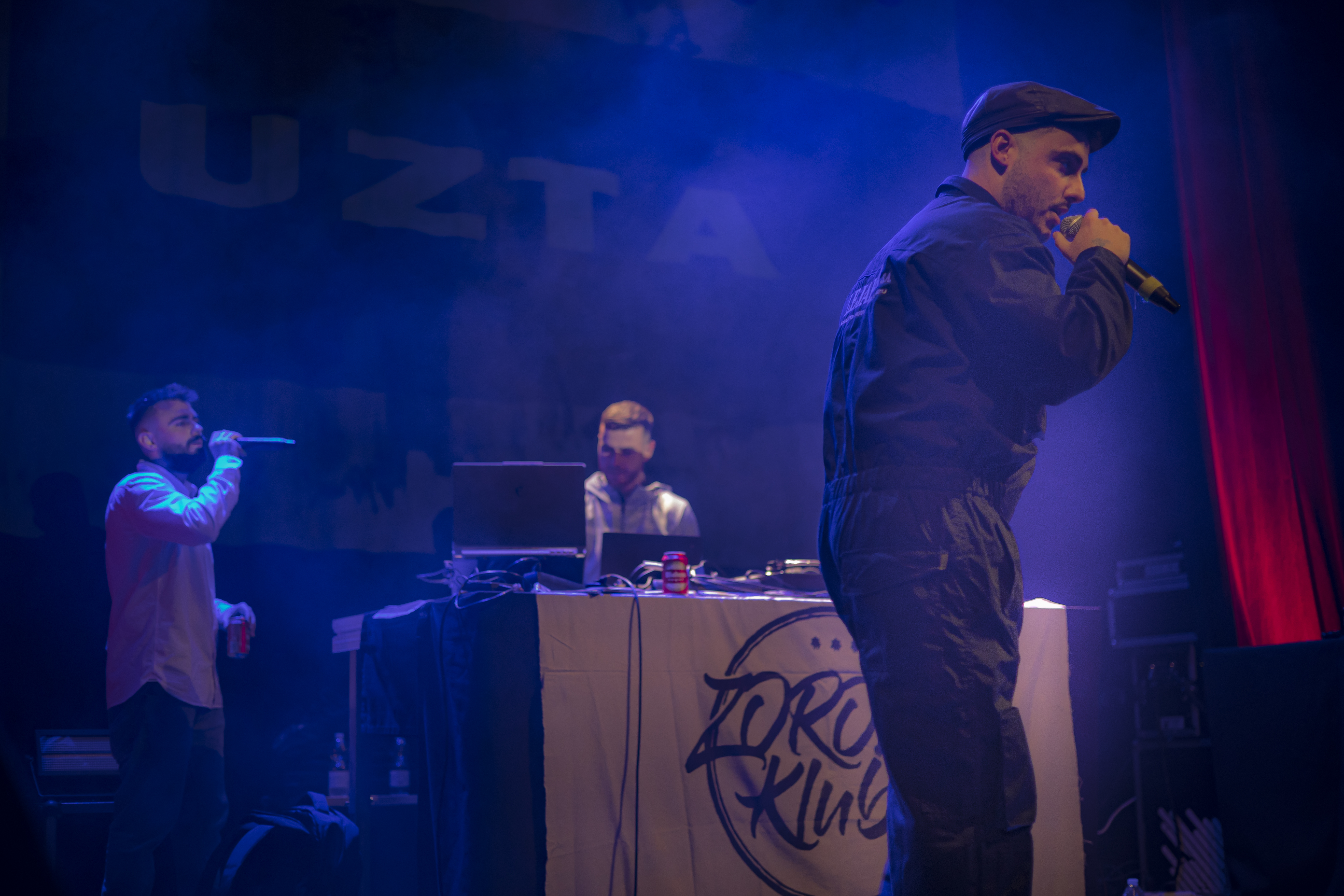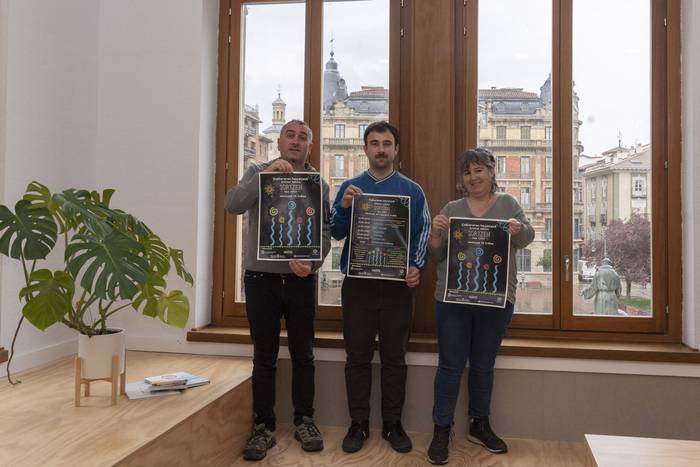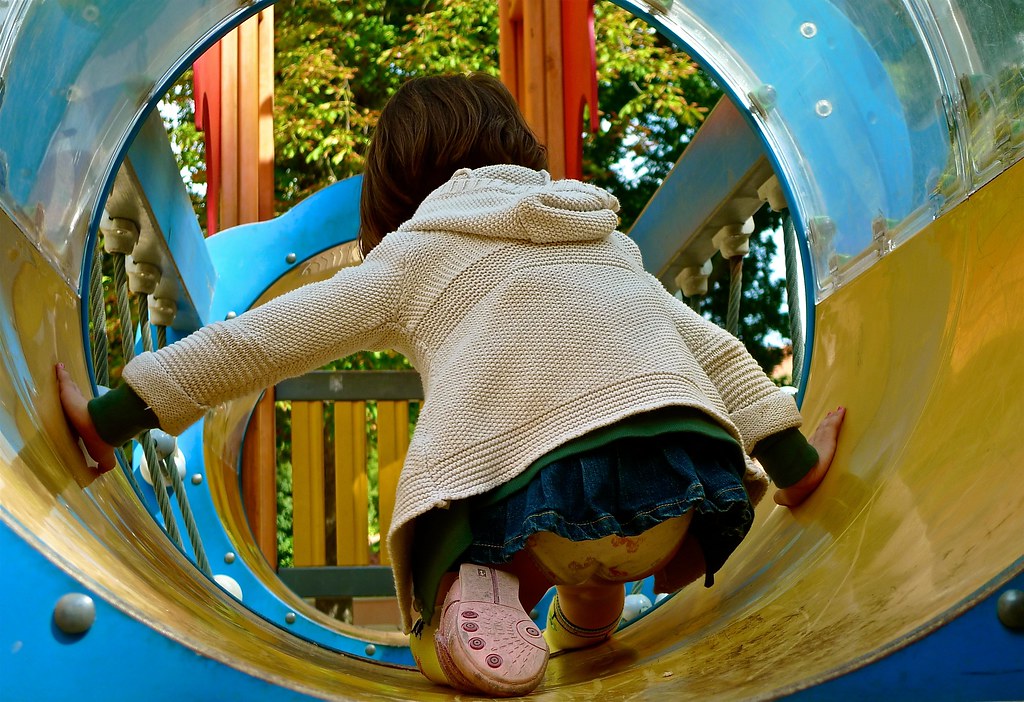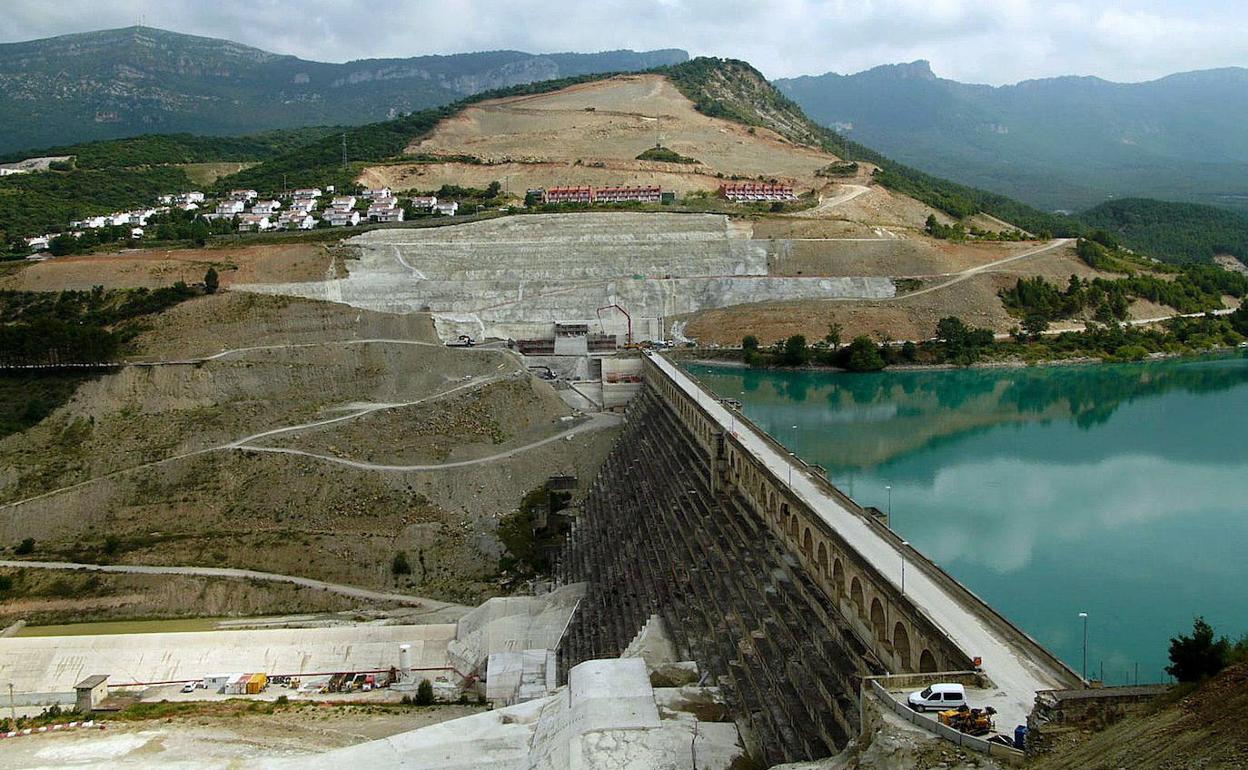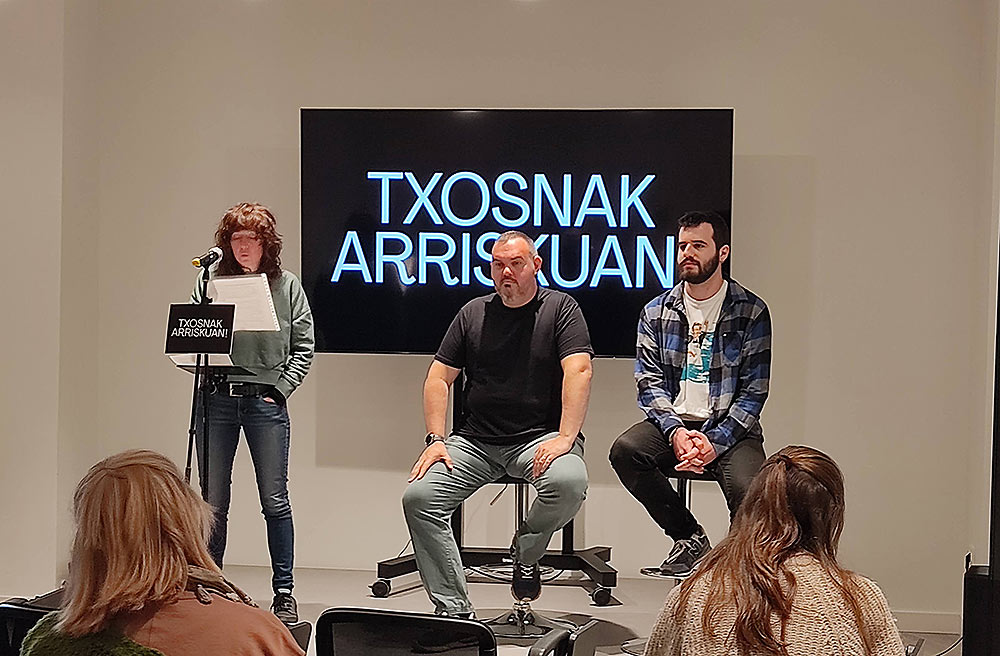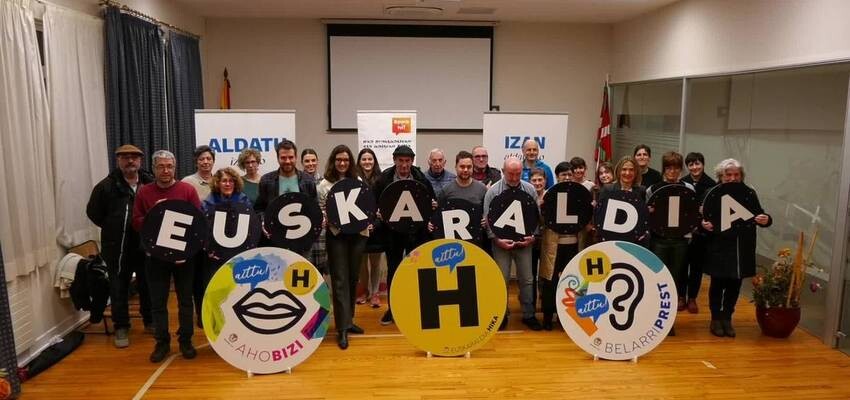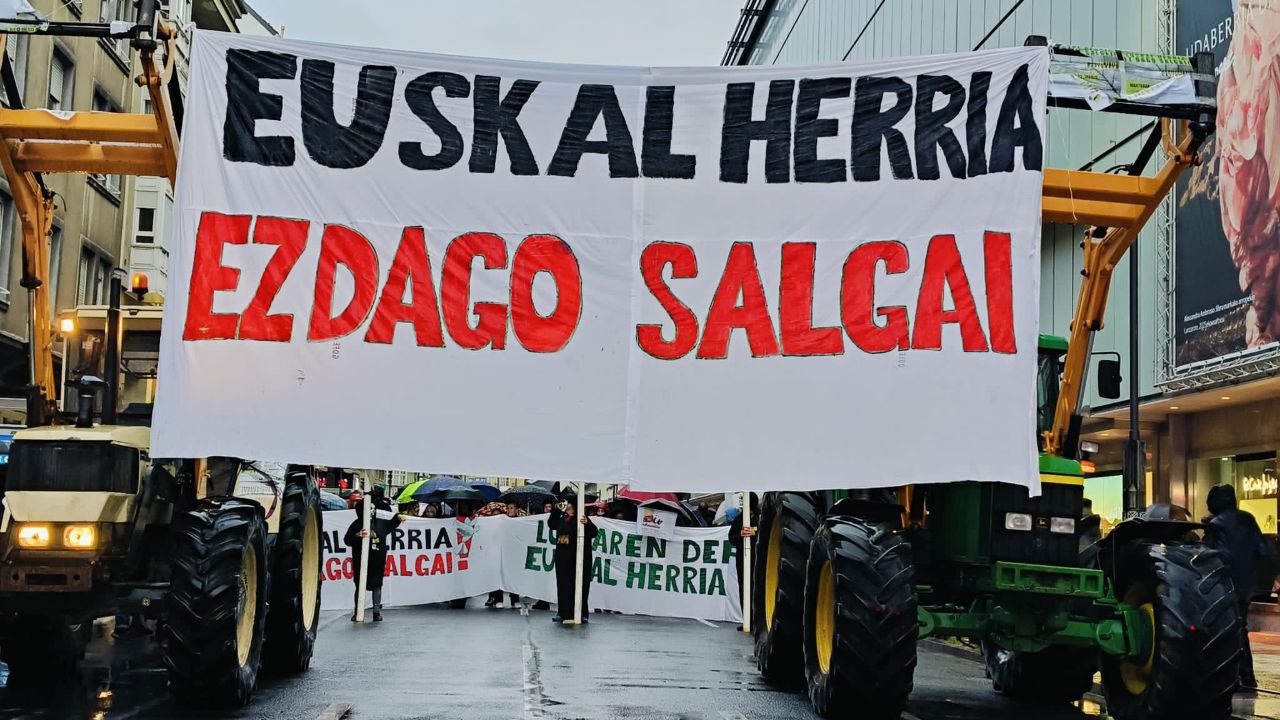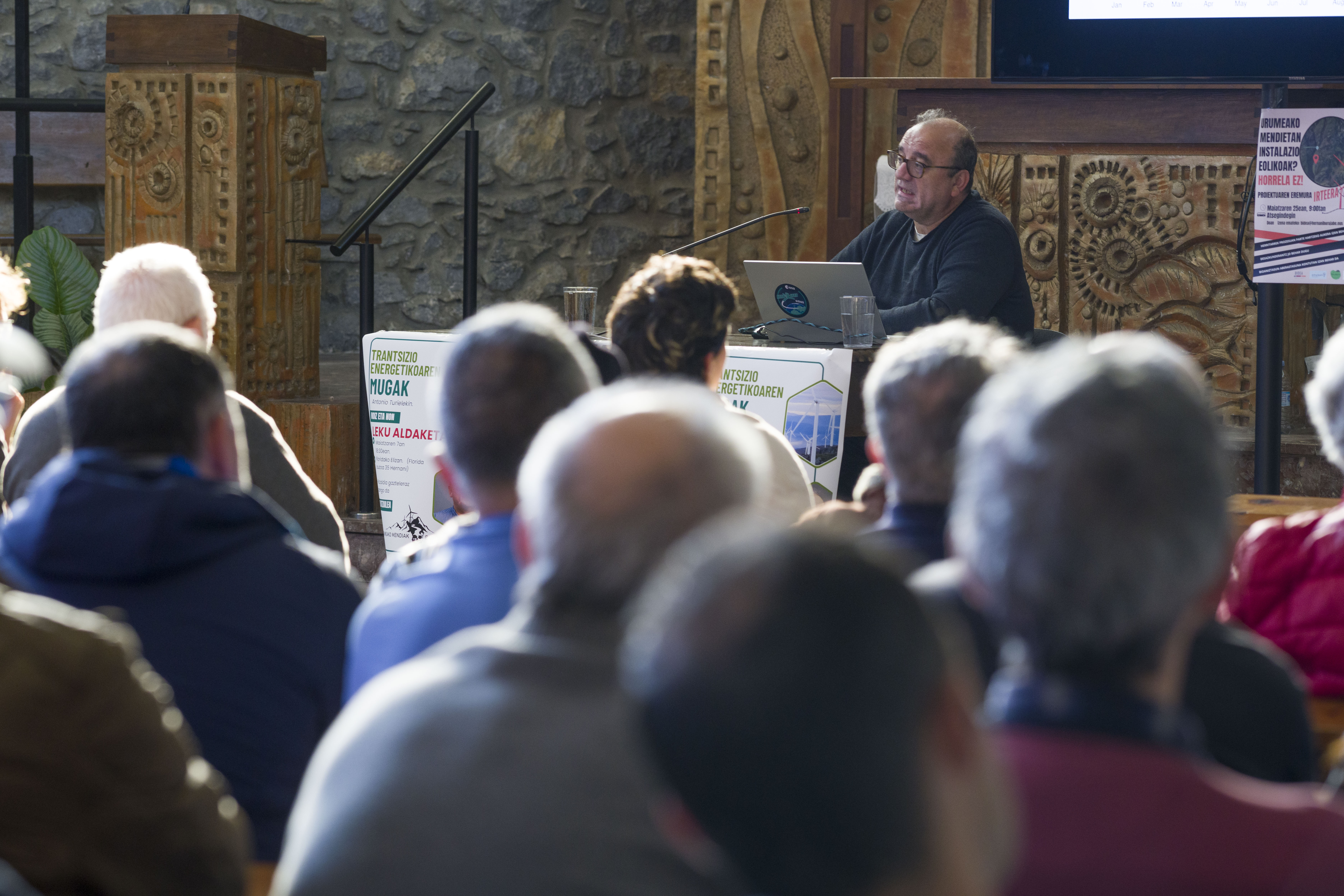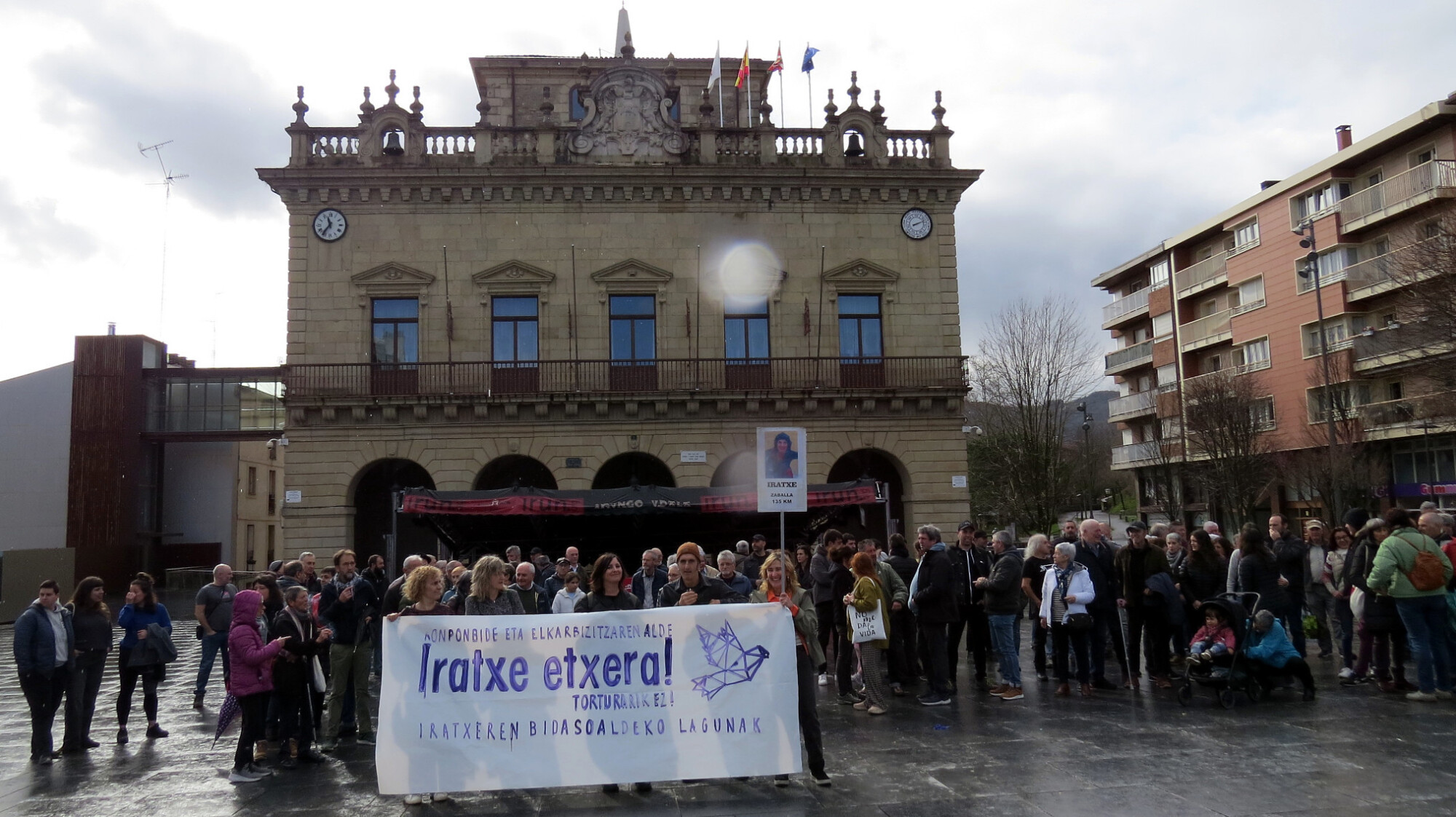Meeting city
- In addition to Donostia-San Sebastian, the Polish city of Wroclaw will become the European Capital of Culture in 2016. In the Lower Silesia region, southwest of Poland, Wroclaw has about 650,000 inhabitants. The twelve islands of the Odra River are linked by 112 bridges and is known as the Venice of the Lower Silesia. Telling the story of Wroclaw is telling the colorful and painful history of central Europe, dominated by different regimes and countries, where ethnic groups and diverse cultures come together.
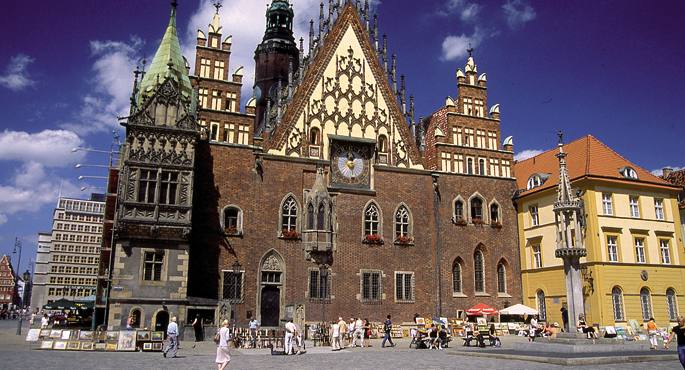
The city has had different names throughout history. The name of the city was first collected in Latin, as "Wroclaw". The first seal of the city, on the contrary, was Sigillum civitatis Wratislavie. The abbreviated name of Wrezlaw, Prezla or Breslaw appears in 1175. The Latin documents used the name Wratislavia or Vratislavia in Czech. In the North and Middle German dialect used at that time, Prezla began to be used and from there the name of Preßlau was derived. From the 14th century on, the name Breslau began to replace the previous versions.
If the Slavic tribes began to colonize the area in the 6th century, we would have to wait until the 9th century in Sleza until the members of the Slavic tribe became the first permanent settlers of the area: then a fort was built on the island of Ostrów Tumski, surrounded by water from Odra. Later, this residence was added to the Czech territory. But until 990, Wroclaw was not Polish territory, since then Prince Mieszko I of the Piast dynasty (960-992) took the founders of the state of Poland who introduced the lands of Silesia into Poland.
By the year 1000, Wroclaw was a city of some importance, as Boleslaw I the Fort (992-1025), the first to take the title of king of Poland, established here one of the three first bishops of Polish territory.
In the 13th century the city was founded and Wroclaw received the first rights and privileges of self-government following the statutes of Magdeburg. Thanks to its fruitful economy and its prolific artisanal activity, the city continued to grow for the next two centuries, although like most territories in southern Poland, in 1241 they fell into the hands of the Mongolian Tatars and destroyed the city.
In 1336 the last prince of the Piast dynasty died and the Duchy of Silesia joined Bohemia. It would be 600 years before Wroclaw returned to the hands of the Poles. The city also began to be known as Prezzla and continued to grow under the orders of the bohemians. In 1387 he entered the Hansa League (a unit of commercial groups that established and maintained the monopoly of sales in central Europe). But the times changed again in the 16th century, since King Louis, without leaving heirs, died in the battle of 1527, so Duke Fernando I of the Habsburg was chosen as king, passing the city to the power of the House of Austria.
In the 17th century, cities were halved by the Thirty Years War (1618-1648) and by the bubonic plague. However, the peace of the Treaty of Westphalia once again generated stability and continued to grow both economically and culturally, as did Wroclaw.
In 1702 the Jesuits opened the Academy.
The next episode of the colorful history of the city took place on April 10, 1741 with the victory of the Battle of Mollwitz over the Austrian army. Then King Frederick II the Great conquered Lower Silesia and placed it in the hands of the Prussians. It was then that the city was given the official name of Breslau (or Prezzla), despite the fact that for five centuries the name of ethnic group of the Germans who inhabited it was being used. Thus, Wroclaw spent another 200 years in the hands of the Germans and at the end of the 19th century, being the largest city in Prussia after Berlin and Hamburg, it began to industrialize remarkably.
In 1807 the Napoleon army took the city; 4 years later, in 1811, the University of Wroclaw was founded.
Among the famous military characters contributed by the city in the 19th century is the pilot aircraft of Manfred von Richthofen, a military man renamed by the Red Baron during the First World War, who was born in Breslau on May 2, 1892.
Second World War
In the 1932 presidential elections, Breslau was the second city to give more percentage votes to the Nazi Party (NSDAP).
When the Nazis came to power in 1933, the last vestiges of Polish origin of the city of Breslau almost disappeared, and courteously invited the 20,000 Polish inhabitants living there, along with the Jews, to leave the place.
On 1 September 1939, the German occupation of Poland triggered the Second World War.
On 19 January 1945, when the Russian Red Army approached the city's gates east, Gauletier Hank ordered the complete evacuation of Wroclaw and ordered its departure on foot, as the population could not be transported by rail or other means of transport. At that time, about one million people, along with many refugees from Germany, lived in the city of Wroclaw. By February 8, over 700,000 people left the city. But one of them was a death march for over 100,000 people. The temperature reached 16 degrees Celsius below zero. The man, who has been arrested, has killed people, animals and humans.
After 14 weeks of siege, Festung Breslau (Fortresses of Breslau) was Germany’s last desperate city before the Soviets on 6 May 1945. In the battles to win the Breslau Fort, 170,000 inhabitants, about 8,000 Red Army soldiers and about 6,000 German soldiers were killed. About 55,000 people were injured.
The Breslau Fort was one of the longest standing cities in Germany, as Berlin collapsed four days after the capitulation on 2 May. On 7 May, the Nazis left arms in Reims and on 9 May they signed the second capitulation agreement, this time with the Soviets. The authorities of the fortress gave the just order that there should be no more methodically left than air on the ground. The German Nazi press republished the photographs taken in Wroclaw on the land still occupied by the Nazis, the buildings destroyed by the Germans were evidence of "Russian vandalism".
Following the end of the Second World War, Wroclaw was one of the most devastated cities in Europe. According to data from the Ministry of Reconstruction in August 1945, the disaster reached 50-60% of the city's structure.
The limits of the new Poland were decided at the Postdam Conference in July and August 1945. As a result, Poland, full of the winners’ ambition, moved west (about 200 km) and ran out of land on the right bank of the River Bug. He lost the current lands of Lithuania, Belarus and Ukraine and gained the lands of East Germany (the “Recovered Lands”, called by the Communist regime of Poland). Breslau returned, under the name of Wroclaw, to the hands of the Poles. Overall, Poland ' s area was reduced by 20 per cent. Border transfer represented a movement of more than 6 million people at the end of the war. Currently there are significant population groups of Polish origin in the lands of Lithuania, Belarus and Ukraine.
In the first few weeks, Wroclaw had three administrations. The Poles’ takeover of the city was based on the principles of the creation of fait accompli on several occasions. The real authority of the city was that of the Soviets ruled by Liapunov. If the administrative rights of the Polish side were formally revealed, the Russians not only agreed with an alternative administration of the Germans, but, without doing so in secret, they also did so openly.
Between 1945 and 1946, the Germans who remained in the city were relocated. In June 1945 there were some 160 thousand Germans in Wroclaw and in 1946 there were only 67 thousand. In June 1945, there were 2,000 Poles. A year later, 150,000. In the last days of August 1945, posters calling for the voluntary abandonment of the city by the Germans appeared on the streets of the city, and in order to relocate the German inhabitants remaining in the houses of other neighbors in September, the operation began to move the German population to different neighborhoods. The real wave of exits began only in February 1946. The transport of the displaced Germans up to December 1946 had been directed to the British side, since at that time they refused to accommodate more people within their borders.
However, the trains started to stop at the Soviet side. Despite the fact that the Soviets supported the administration of the Germans, their soldiers carried out numerous acts of violence and rape against the German population. The Poles also committed other kinds of burglaries and acts of violence, especially the men of the MO militia and the criminals and looters who arrived in Wroclaw.
Officially the relocation of the German population ended in 1947.
Some Germans expelled from the city wrote as follows: "Two days later, the Poles began an inspection operation in which the officers guarding the border took away most of the money and possessions we had. We were finally taken to the Freiburg train station in Breslau. Along the way, several groups attacked us several times and robbed us and took away everything they could. Around midnight we were introduced into the cold and dark train wagons for cattle transport, and we immediately began to move west.”
To repopulate the city came people from Lwów (now from the Kresowiacy regions in eastern Poland, in Lviv and around Ukraine), Wilnot (now the capital of Vilnius in Lithuania), and from the vicinity of Warsaw and Poznan, in Poland. The newcomers, or the ‘pioneers’, as they called them, inherited a strange city that was destroyed by 70 percent. The egalitarian policies of the new communist government were removing all that was not considered ‘Polish’ zuen.Azken to which the members of the Lemko and Boy ethnicity who lived in eastern Poland prior to the War and spoke of Ukrainian dialects were also added. As a result of Operation Vistula in 1947 (with the aim of also destroying the Ukrainian Rebel Army for the independence of Ukraine (UPA), some 530,000 were dispersed in Poland and Ukraine from the motto, boy and Ukrainian: Many of them were taken to Wroclaw.
Along with the inhabitants of Lwów, Lwów’s teachers came to Wroclaw in a block. The inauguration of the new University took place in the partially renovated Aula Leopolda. In this room, which stands out in the history of the university before 1945, his first rector, a professor from Lwów, said: “We are heirs to the German material culture and the Polish spiritual culture of the University of Lwów.”
Since the 14th century Lwów has been one of the most progressive and famous cities in Poland. For many centuries, in culture, in architecture, in art… He fought with Krakow and became the counterpart of Germanic Breslau. Its university was founded in 1661 and from 1817 it had the Ossolineum Institute for the Conservation of Polish Culture. Its inhabitants and teachers brought to Wroclaw the values sown in Lwów. Representing the culture of Lwów, in Rynek Square you can see the statue of the writer Aleksander Fredro (1793 – 1876 Lwów). He was brought from Lwów in 1956 and replaced in Ryn Square by the statue of Frederick II the Great before World War II.
The beginnings of the restoration of teaching were not easy. This is what a teacher said when he began to teach after completing the classrooms: “Students come from several regions of Poland, but most come from the East, or, as they say, from territories that are beyond the River Bug. Few of them spent the war on the outskirts of the officers of former prisoners of war, others in Germany as peasants or reared. The rest fought in the resistance or in the Warsaw Uprising. Some of the students survived on the outskirts of Auschwitz or Brussels-Rosen. It will not be easy to move from a forest or camp for them to a school table.”
And the Polish newcomers occupied their homes. “Do you live here?” “A robust woman asked. For the moment, we have decided to live here, in front of your house. It's very similar to the house we had in Lwów, and that's why we've chosen it. Hey, can you live here? Is it dangerous? My middle-aged husband is very nervous and fearful, and I'm also very worried.
To alleviate the feeling of not feeling there, the Poles started putting posters in their shops and restaurants in Polish. An in-person witness said: “I was only out of Wroclaw for a day and a half, and when I came back I saw many changes. The most prominent Polish names were those of the facades of shops or buildings with offices. Dark brown paper cartels “decorated” the windows of the trams as well as the shop windows and facades of restaurants, cafes and shops. And although distant from aesthetics and beauty, among so many German things, however, they showed the Polish character.”
The lack of skilled and trained personnel in this situation led to headaches, so the Polish bosses tried to stay in their jobs because of the reputation of the German specialists for their high skills and skills. However, the Germans, dressed in marked and “segregated” clothing, used to be paid in exchange for main food. It was sometimes the case that they did not take up what had been said earlier in the agreement and then there were stoppages.
In the large lobby of Wroclaw there were two fairs and in them you could buy virtually anything: Bishop's Square Grunwaldzki and Nankier. The fair lasted in these places until the 1950s. The Germans also sold abandoned goods there, which helped them to give a black legend of bad fame. It should be noted, however, that, due to the decision of the Communist authorities, the goods abandoned by the Germans could not be converted into private property – at the latest, they allowed their reuse for a certain period of time by the authorities, at the official request of the recipient.
After full control of the city, the Soviet occupants began to burn the already destroyed city. Whole neighborhoods were burned. On May 10, 1945, the collection of books of the University library was also burned. Also for two days, soldiers from two Soviet units fought to win the grocery stores of the Germans who were on Sternstrasse.
In the months following the end of the war, the structure was similar to the tower of Wroclaw Babel. Hundreds of thousands of people of different nationalities passed through it: forced workers, former prisoners of war... The people dispersed by the confrontations of the war returned to their homes to search for their families and start a new life. For many of them, Wroclaw was only a step in the direction of the West, not the last stop.
The first Wroclawtarras were born in June 1945, on the 11th, first boy, Aleksander Olbratowski and the 21st, first girl – Aniela Zalewska. On 29 May 1945, the first marriage act was held in the new Civil Registry. Then, the votes of Janina Krupa and Maksymilian Heller, number 2, were exchanged. They were lieutenant.
The Catholic Church reacted faster than the Government of Poland in the face of changes in the situation. Unexpectedly, on 12 August 1945, with the most prominent Vatican forces next to him, came Polish Cardinal August Hlond and informed the German churches that it was he who had to take over the administration of the diocese. This happened four days before the signing of the agreement between Poland and the Union of Soviet Socialist Republics (USSR), in which the Soviets would sign a pact that would completely renounce the property left by the Germans. At the end of the month, Priest Karol Milik was appointed new administrator of the Polish diocese and assumed command of the Cathedral.
The new situation opened the door to the creation of private companies. Those who had money could open a restaurant. In the autumn of 1945 there were so many restaurants that the City Council temporarily suspended the granting of new licences. Pubs and bars, wine houses, coffee shops and licensed buffets for the sale of alcohol spread throughout the city - in early 1946 it is estimated that there were more than 600 such establishments in the city.
In August 1948, for four days, the ‘International Congress of Intellectuals for Peace’ was held at the Polytechnic of Wroclaw. Renowned personalities from 45 countries participated and the Soviet Bloc was supposed to give respect to international politics. Pablo Picasso, Aldous Huxley, Frédéric Joliot-Curie, Irène Joliot-Curie, Bertolt Brecht … Congress had an anti-American and pro-Communist touch. It was an act of the propaganda apparatus.
In 1949, local authorities began a planned demolition and cleaning process to destroy Wroclaw, officially collecting “reused bricks”. The “claimed” building materials, i.e. the bricks were sent to Warsaw, Nowa Hutara and other areas of buildings in other cities. Undoubtedly, from 1949 to the 1980s, Demas’ derribes were carried out with the permission of the central authority, which considered it necessary to eliminate the Germanic character of its metropolis, Wroclaw. But, even if it seems contradictory, in the midst of the sea of waste, its new inhabitants, under the supervision of the Wroclaw Central Reconstruction Office, founded in 1946, began to rebuild historic churches and public buildings. First they began to rebuild the Gothic buildings, which were, in a way, testimony to the real Piast dynasty and, consequently, gave strength to the Polish affiliation of Wroclaw. However, the Polish authorities suspended the “private initiatives and the reconstruction of churches” that the Wroclaw Central Reconstruction Office was carrying as an institution. However, in 1953, the reconstruction and planned development of the historic centre of Wroclaw began.
The Poles have also experienced the process of recovering their Historical Memory, after communism came out of power. In the Second World War, German forces Armia Krajowa (AK – “People’s Army”), Wolnoë i Niezawislość (WiN – “Freedom and Sovereignty”) and Narodowe Sily Zbrojne (NZS – National Forces) were threatened by groups. The AK Group, for example, had strong links with the Polish Government in exile and consequently suffered them as an obstacle to the new Polish Communist State. In the period 1944-1956, thousands of people were arrested and searched throughout Poland for belonging to or collaborating with the AK, and many people were sentenced to more than 10 years in prison. Many of the detainees were transferred to the Virgin Islands, who were executed or declared missing. Józef Francza, the last partisan of the AC, was killed in 1963 in eastern Poland. The city of Wroclaw became a refuge for them. For forty years of suffering, many of those who had been gudaris kept secret.
Another group persecuted by the authorities were the women and children of the 22,000 Polish officers killed by gunfire during Katin's slaughter in the forest (many of them were deported to Siberia, who were banned from working and receiving higher education and pensions). In the face of the Soviets, friendly friends and brothers in the face of Polish society, the Katyn massacre, officially silent for 40 years, had to be kept silent. Some of them were transferred to Wroclaw. The statue dedicated to the dead in the Katin Forest is located next to the Odra River.
Cultural Renaissance
In the post-war era, the new inhabitants began to show their enthusiasm and enthusiasm for culture. In a state that could not get worse, it was the wonderful creation of a Polish cultural life that started from scratch. After six years of war, the hunger for education was endless. On many occasions, the level and offer of dramatic, operatic, symphonic concerts, offered in semi-slip auditoriums, was impressive.
However, the real renaissance that took place in the city took place in the 1960s. Between 1962 and 1967, by the cultural force of the city, but also for other useful and political reasons, Wroclaw became a fashionable city. The capital of Lower Silesia was visited by many people… different delegations, officials, journalists that went dozens, including the stars of this trade. The Wratislavia Cantans (Festival de Música Oratorio y Cantata) was held for the first time in 1966 and is still being held today. The city went through a fruitful process of cultural renewal and its inhabitants found the way out of both Communism and the oppression of the Soviet Union.
Poland received Christian baptism in 966. A thousand years later, the Communist authorities were making every effort to influence the national identity of the Poles against Iglesia.En 1966, the authorities of Wroclaw, as well as those of other cities, celebrated the 1000th anniversary of the Polish State, while the Church organized the religious acts of the thousand years of the Christianization of Poland.
After the war, the Jews gathered in the Congregation of the Jewish Faith became the second largest group of the Polish population of Wroclaw, with about twenty thousand people. They had a synagogue, their graveyard (on Lotników Street) and a slaughterhouse where they could commit a kosher murder ritual. But the suffering suffered by the Jews did not end in 1945, in 1968. With the creation of the State of Israel, they were expelled from the major cities of Poland (Warsaw, Gdansk, Wroclaw…) and, as a result, their number fell sharply.
In the early 1980s, at the beginning of Solidarnoë (“Solidarity”), Wroclaw became the heart of a powerful macro-region, Poland’s second largest city in trade union participation and membership. The unions made a courageous and effective effort to raise social awareness. This was done mainly through the trade union press, which broke the monopoly of the official media, and although it had some weaknesses, it was a genuine movement.
At the dawn of 13 December 1981, as in all Polish cities, the tanks took the place of the trams on the streets of Wroclaw. A total of 400 leaders from Solidarnoë were arrested, who have been detained since 1 October. The ZOMO security police destroyed the headquarters of the Solidarnoë region. General Jaroselski declared the state of martial law. The war law lasted until 22 July 1983.
But the anti-communist movement was already weaving in local society. In 1987, for the first time, Wroclaw’s most original contribution to the cause of the people – Alternatiba Orange – was presented. In a city with the reputation of the Theatre of the Absurd, a courageous art history student, Waldemar Frydrych (born in 1953), with a style characteristic of ‘mayor’, had the idea of ridiculing dictatorial leaders for leaving them out of play.
But the people had the church’s support against the communist regime, and for the Poles Pope John Paul II, a pilgrim of hope, was more than a religious ruler. In July 1982, Pope John Paul II visited Wroclaw on his 2nd visit to Poland and offered an outdoor mass for 700,000 enthusiasts.
Following the fall of the Berlin Wall, the city’s first democratic municipal elections were held in 1990.
In May 1997, Pope John Paul II made his second visit to Wroclaw. The goal, 7,000 believers participated in the 46th edition of the International Film Fair of San Sebastian. It was the opening of the Eucharistic Congress. On this occasion, the tone was much more ecumenical. However, the main theme of the Pope’s sermon at the Orbis Stadium was ‘Freedom’.
Proximity to the river does not always bring benefits. Since 9 July 1997, the city of Wroclaw and the surrounding villages suffered a great flood of the Odra River. In the afternoon of July 11, Opatowice was flooded and along Saturday Olawa, Siechnice, Kotowice and Radwanice started to float. The Kozanów neighborhood also remained underwater - at the most critical moments, the water reached 2-3 meters high. Wroclaw had no drinking water. Terrible efforts were made to save Ostrów Tumski. On Sunday 13, almost a third of the city was submerged underwater. People were incommunicado inside the house. Water for eating and drinking was distributed by helicopters. On 14 July, flood waters began to descend progressively. A week later, the people of Wroclaw continued to drink water. In the affected territories, a state of emergency was declared, in which 56 people died. Nowadays, on the walls of several streets the level reached by water is marked.
In 2000, Wroclaw celebrated its millennium.
Pioneering science and culture
Breslau/Wroclaw has been one of the leading cities in science, art and culture throughout history. The lingua franca of German science at the beginning of the 20th century is a city awarded 10 Nobel Prizes in the fields of physics, chemistry, medicine, economics and also literature.
Aloysius "Alois" Alzheimer is another renowned scientist who has had a direct relationship with the city of Breslau. In 1912 he was appointed professor of psychiatry at the University of Breslau. In mid-December 1915, at the age of 51, he died in the capital of Baja Silesia after feeling ill on the train on his way to university.
Wroclaw XXI. In the 15th century
In the twenty-first century, the Federation of Exiles Bund der Vertrieben (BdV), led by Erika Steinbachpolítica de la CDU, is still not healing the wounds caused by the transfer of 6 million people dute.Alemaniako, has opted for the interests of the citizens of the German ethnic group who were expelled from the centre and east of the German federation Europa.Con. They have succeeded in reappropriating the houses that had not yet been rebuilt with their scriptures.
Currently, Wroclaw is one of the most influential and influential cities in the industry and economy of Poland, and it is second after Poland Warsaw. It contains the manufacturing and development plants of the major multinationals in Europe and the world (with a significant weight in the manufacture of household appliances)… such as Volvo, Toyota, Bosch, LG Electronics, 3M, HP and Whirlpool, as well as several companies of IT, biotechnology and pharmaceutical industry in their technological park.
The city is not unknown to many Basques, as Basque companies began to settle in it in 1999. The first, following the acquisition of the company Wrozamet S.A. (now FagorMastercook S.A.), Fagor Appliances S. Coop. They were the Association and the MCC Investments. Subsequently, MCC and other cooperatives and Basque companies from abroad have come to Wroclaw and surroundings such as Coinalde S. Coop. Coop., Eika S. Coop., Embega S. Coop., Industrias Tajo S. Coop. Tabiplast Sp. F.C. with the name) and Panel Fixations S. Coop. ... it is not surprising, therefore, that in the city SPRI (Association for the Industrial Conversion of the Basque Country) has opened an office of Wroclaw Support to support Basque companies in the centre of Ryn Square (market).
On the other hand, the cultural offer in the city is very wide. In addition to the Wratislavia Cantans Festival, among other cultural activities are the Festival of Cantores Actors, the International Open Theatre Festival, the Cathedral Island Nights and the Third International Year of Drawing.
Wroclaw has been able to take ownership of the German past, reinforcing its name and identity. The motto of the city is Miasto spotkamazan, “The city for the encounter”. As for the history and present of Venice in Lower Silesia, the motto is undoubtedly the right one.
Bidaiaren gogoetak ‘aberriratuen’ memorian gordeko ziren betirako. Michal Sobków erosotasun erlatiboan, bidaia ondo horniturik egin zuen lagunetako bat izan zen. Hala deskribatzen du:
“1945eko irailean, Koropiecen genuen etxea beldurrez eta mesfidantzaz abandonatu genuen. Polonia hitz polita da… baina gu iluntasun ilunenerantz gindoazen. Itzuli artean, gure gauzak zaintzeko hitz eman zuen ukrainar fededun hari agur esatea ez zen gauza erraza izan… Gure ama dagoeneko zahartuta zegoen. Nire arreba zenbait urtez gaixorik zegoen… eta ni 17 urte berri egindako mutikoa nintzen, eta oinarrizko baserri-lanak egiten baino ez nekien.
Gurdia gure ondasun gutxiekin kargatu genuen, atzealdean behorra eta behia lotuz… Ukuilura joan eta azkeneko aldiz nire gaztaina-koloreko moxala ikustera joan nintzen, eta barkamena eskatu.
Bilgunea Pyszkowicen, 30 km-tara zegoen. Ez zegoen geltokirik, bertan amaitzen zen trenbide bat besterik ez… baita trenbidearen alde banatan lastoz estalitako kanpadendak ere. Ebakuazio Komitean, basora joateko eta lapurren erasoen kontrako makil sendo bat mozteko esan zidaten…
Guk bi hilabetez itxaron genuen, baina beste batzuk askoz gehiago itxaron behar izan zuten. Kanpalekua jendez gainezkaturik zegoen. Gero eta janari gutxiago geratzen ari zen. Abereak hiltzen ari ziren. Gure gainbegiralea beti mozkortuta zegoen… Egun batean, Sobietarrengandik bagoi gutxi batzuk lortzeko aukerarik izango zuela esan zigun, baldin eta berari denon dirua bildu eta bota eder pare bat erosten bagenion. Euria egiten hasi zuen…
Gure gauzak, zanga sakon batean gelditu ziren ganadua garraiatzeko tren-bagoi irekietara mugitzeko bi orduko denbora eman ziguten. Oihuak, garrasiak, negarrak entzuten ziren, pertsonak eta abereak bagoietan sartzeko arrapaletatik behera irristatzen ziren bitartean. Ostera, aurretik abisurik eman gabe, trena soilik bagoi erdiak hartuta abiatu zen. Txistuak jo, eta etapa hura atzean uzteagatik Jaungoikoari eskerrak eman genizkion.
Kopczyncen ustekabea jaso genuen. Trenbide-langileek gurpilak mailu batez jotzera etorri ziren, eta ondoren bagoia askatzea agindu zuten. Gainkargaturik omen ginela esan ziguten. Arrazoinamenduak atzera egin zuen, trenetik salto eta eskutan bi botila vodka jarri nienean. ‘Ez duk nahikoa…’ Beraz hirugarren bat eman nien. Hurrengo geltokian gauza bera gertatu zen…
Jende ugari Pyszkowicetik irten ginenetik jan gabe zegoen. Jateko makarroi lehor gutxi batzuk geratzen zitzaizkigun, baina ez ginen ausartu inork hauek jaten ikus gintzan. Gure behorrak umea galdu zuen. Ur eta bazkaren faltagatik, abereak hiltzen ari ziren. Gero eta maizago trenbidearen ondoan, landu gabeko bagoietako egurrez egindako gurutzeen ondotik pasatzen ginen, aberriratuak ehortziak izandako lekua erakusten zuten…
Geltoki batean, errifle automatikoa bizkarrean zutik zegoen guardia batenganantz lasterka abiatu nintzen:
- ‘Non gaude?’ – galdetu nion urrutitik.
- ‘“Errekuperatutako Lurraldeetan”’ – erantzun zidan.
- ‘Eta badakizu nora garamatzaten?’
- ‘“Errekuperatutako Lurraldeetara”’, erantzun zuen irribarre batez…
Guretzako, hilabete baino luzeago iraun zuen tren-bidaia Wroclaw ondoko Brochów-en amaitu zen. Jende askok ezin zituen bere ondasunak aurkitu… Gaua, trenbidearen beste aldean zegoen leiho-begi ugariko eraikin batean pasa genezakeela esan ziguten. Erabat hutsik zegoen, hormak besterik ez zituen. Baina hainbat astetan lehendabiziko aldiz sabai egoki baten azpian loak hartu ninduen…
Hiru egunez ez ginen jabetu zer gertatzen ari zen… Orduan, Wroclaw-era gurdiz eraman gintuzten, eta Grunwald Zubiaren beste aldean, milaka lagun ziren enparantza batera iritsi ginen. Horrelakorik ikusi gaberik nengoen. Nonahi saltzeko gaiak ikus zitezkeen. Gure gidariak Szaberplatz zela esan zigun. Paretan kartel bat zintzilikaturik zegoen: ‘PIONIER BUDUJE – SZABROWNIK RUINUJE’ (pioneroak eraikitzen du, arpilatzaileak suntsitu) zioen. Shabrovnik-ek zer esan nahi zuen galdetu nuen. ‘Kriminalak’ esan nahi zuela esan zidaten…
Gure helmugan, GROSS MOCHBERN zioen kartel baten ongietorria jaso genuen… Etxe zoragarri batzuen ondotik igaro ginen, gidariak Polonia erdialdeko jendearentzako gordeak zirela soilik esanez…”.
BRN + Neighborhood and Sain Mountain + Odei + Monsieur le crepe and Muxker
What: The harvest party.
When: May 2nd.
In which: In the Bilborock Room.
---------------------------------------------------------
The seeds sown need water, light and time to germinate. Nature has... [+]









